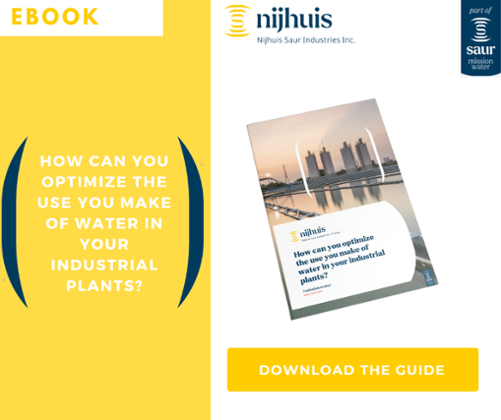Water resource management is one of the greatest challenges facing our societies and economies today. The need to monitor water consumption in industrial plants is assuming a crucial level of importance. The monitoring systems used must be structured around analyzing each process individually if we are to identify genuine opportunities for saving water.
- Mapping water consumption
- Good practices for saving water
Experts believe that the pressure on water supplies for industrial plants is now less financial in nature — as is often the case with energy — as it is resource-related. At global level, it is widely held that half the world's river basins are now short of water for at least one month a year. Even in France, climate change is putting water resources under real pressure, especially in those regions particularly exposed to drought, or more broadly, to water stress caused by demand outstripping the availability of water in the natural world. To say nothing of the increasing number of issues around pollution.
Some industrial plants in France are already subject to prefectorial restrictions on water consumption at certain times of the year. Hence the importance of introducing water cycle management for industrial plants. Naturally, this begins with monitoring all water production and consumption data using meters to measure the volumes of water abstracted from boreholes, and meters to measure how much water is being used by industrial plant processes.
For more information, please link to this article: Managing the supply of water abstracted from boreholes to feed industrial plants
1 - Mapping water consumption
Because each industry and each production plant have different water needs, it is important to understand precisely where the majority of water is being consumed on a case-by-case basis, and quantify the amounts involved as the basis for considering which consumption reduction measures to implement. The use of sub-meters makes it possible to sectorize the system and accurately map industrial plant water demand and consumption. The point of mapping is to gain a clear overview of those areas of the plant where action is required to reduce consumption. Generally speaking, those sectors consuming the highest amounts of water are cleaning areas, cooling towers or steam production facilities.
Smart sub-meters can then be used to assess the effectiveness of the measures implemented, and provide ongoing long-term monitoring of water consumption. More broadly, there are turnkey solutions available that collect and process reliable and secure data for all types of consumption, including water, gas and electricity.
2 - Good practices for saving water
Once the highest-consuming processes have been identified and the monitoring program implemented, the next step is to put in place water resource management measures. One of the most important things to realize is that when it comes to saving water, the human factor is the most influential of all. By introducing effective management of water consumption supported by an easy-to-use and targeted reporting structure, industrial users can hope to reduce their water consumption by up to 20% or even 30% very quickly.
The example of semi-automated Cleaning in Place (CIP) systems is telling, because those that consume largest quantities of water are almost always the oldest and/or those that are inadequately monitored. Unless the people who operate the systems are made aware of the situation, consumption can skyrocket.
But employers will always have the opportunity to correct for the human factor by investing in technology, which could mean installing more energy-efficient CIPs, using more efficient cleaning products, and/or opting to reuse water for different purposes wherever possible. Reuse can also significantly reduce the volumes of water used by cooling towers. The final lever available to industrial water users is working to improve the process. For example, we have helped a commercial dairy to reduce its water consumption from 1.1 liters of water per 1 liter of milk produced to 0.90 liters simply by choosing to install more efficient production tools that save water on its production lines.
If you have questions about any of these issues, or would welcome expert support for improving water resources in your industry... Please contact us to tell us about your project.
